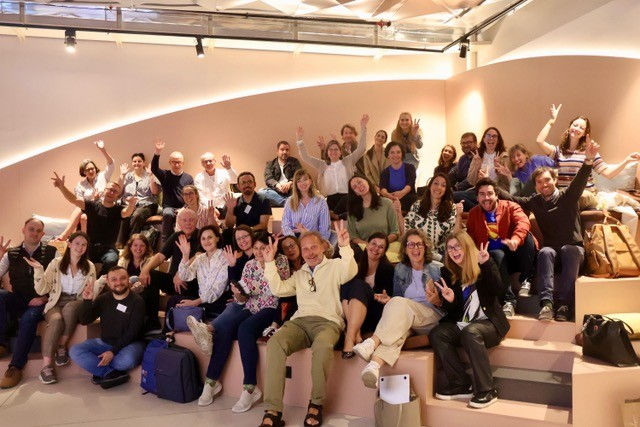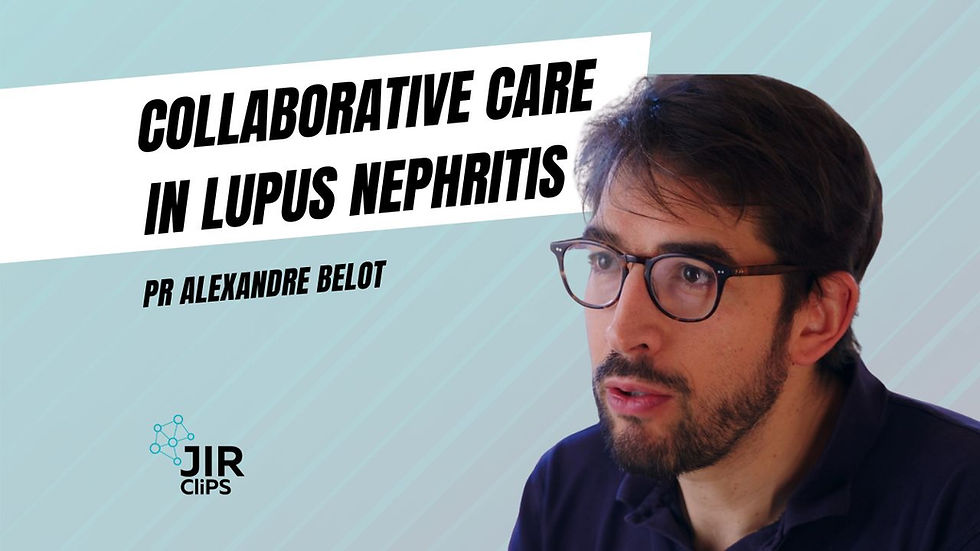JIR Winter School 2023 - JIA: what’s new in 2023?
- Dr Tanja Hinze
- Mar 6, 2023
- 4 min read
Updated: Jul 25, 2023
At the beginning of March, the JIR Winter School 2023 took place in the beautiful Swiss mountains in Chateau-d’Oex. The participants joined the lectures onsite and online. During the opening session the outstanding speakers gave us insights in the latest development in classification, pathophysiology and treatment of juvenile idiopathic arthritis (JIA).

Prof. Peter Nigrovic from Boston Children’s Hospital began his talk with classification of JIA.
Current ILAR-classification defines JIA as joint inflammation with no other cause beginning before the age of 16 and lasting longer than 6 weeks. However, the reason for the age cut-off point of under 16 years is historical and not biological. The ILAR-classification with 8 different JIA-categories exhibits no terminological overlap with adult forms of idiopathic arthritis, which makes transition even more complicated. The data in the literature show genetic similarity in HLA associations between some of the JIA categories and that most of the JIA categories have a potential adult counterpart (Hinks A et al. Ann Rheum Dis. 2017, 76(4):756-772). The biological classification could be the basis of the up-coming PRINTO-Criteria of childhood idiopathic arthritis (Nigrovic PA et al. Nat Rev Rheumatol 2021, 17(5):257-269). With regard to the treatment of JIA patients, Prof. Nigrovic focused his presentation on two important questions: what is the right initial treatment and when is the right moment to stop the therapy in patients in remission. The trajectory analysis of data from “STOP-JIA'' study, a CARRA registry study comparing the efficacy of three different treatment approaches (Kimura et al. Arthritis Rheumatol 2021, 73(10): 1989-1909), showed that starting of biological DMARDS early is associated with more rapid achievement of inactive disease in patients with untreated polyarticular JIA (Ong MS et al. Arthritis Rheumatol 2021, 73(10): 1910-1920). A new important player in therapy of JIA are JAK inhibitors. Data published in 2021 regarding a double-blind, placebo controlled, withdrawal phase 3 randomized trial of tofacitinib showed that tofacitinib is an efficacious therapeutic option in patients with polyarticular JIA (Ruperto N et al. Lancet 2021, 389:1984-1996). The big advantage of treatment with JAK inhibitors in children is an oral application, but possible cardiovascular and cancer risk should be kept in mind (Ytterberg SR et al. N Eng J Med 2022, 386(4):316-326). Concerning the question about the right moment to discontinue the treatment, the data from PREVENT-JIA trial showed that using predictive markers of subclinical inflammation such as CRP and S100A12 could be helpful in decision-making of the therapy withdrawal (Gerss J et al. Ann rheum Dis 2022, 81(7):990-997). Dr. Chang and colleagues evaluate joint-specific memory by analysing flares involving paired joints and showed that in 83% of flares the original joint and in only 17% of flares the contralateral joint was affected. Further on the disease extended to at least 1 new joint in almost 40% of flares, with the risk of involving new joints being higher in patients in flare off medications than in flare on medications (Chang MH et al. Arthritis Rheumatol 2022, 74(11).1851-1858). One of several possible explanations for joint-specific memory could be T resident memory cells (TRM) (Chang et al. Cell Rep 2021, 37(4):109902). The joint accumulation hypothesis assumed that TRM accumulate over time in more and more joints leading to involvement of new joints in flare gradually (Chang MH et al. Arthritis Rheumatol 2022, 74(11):1851-1858).

Prof. Nicola Ruperto from the IRCCS Istituto Giannina Gaslini in Genoa gave us an update on enthesitis-related arthritis (ERA) and juvenile psoriatic arthritis (JPsA). The data from EPOCA study provided an overview of the epidemiology, treatment and outcome of childhood arthritis worldwide (Consolaro A et al. Lancet Child Adolesc Health 2019;3(4):255-263). A randomized, double blind, placebo-controlled multicentric study showed efficacy of adalimumab in pediatric patients with ERA (Burgos-Vargas B et al. Arthritis Care Res, 2015 67(11):1503-1512). An open-label trial demonstrated up to six years efficacy of etanercept in pediatric patients with ERA and JPsA (Foeldvari I et al. Arthritis Res Ther 2019, 21(1): 125). Also, tofacitinib has been shown to be effective in children with ERA and JPsA (Ruperto N et al. Lancet 2021, 398:1984-1996). In the newly published data from a randomized, double-blind, placebo-controlled, treatment-withdrawal, phase 3 trial of secukinumab in ERA and JPsA, secukinumab demonstrated significantly longer time to flare and lower number of flares versus placebo. Safety in this pediatric population was consistent with the known safety profile of secukinumab (Brunner HI et al. Ann Rheum Dis 2023, 82(1):154-160).

The second part of the session focused on the consensus guidelines and clinical practice strategies. Prof. Catharina Schuetz from the University Hospital Dresden presented German evidence- and consensus-based guidelines for the treatment of JIA (Oommen PT et al. Clin Immunol. 2022, 245:109143). It is an updated version of previously existing guidelines. A systematic literature review was performed between 2011 and 2018, overarching principles were proposed and pre-selected via an online survey followed by two multidisciplinary consensus conferences. The guidelines contain 12 overarching therapeutic principles, 9 recommendations on pharmacological and 5 on non-pharmacological treatments for JIA.
Important statements by Prof. Schuetz regarding evidence- and consensus-based guidelines were that evidence from literature is variable and an extrapolation from adult rheumatology is not always possible. Because of rapid developments in medicine and fast arriving new therapeutic options, consensus guidelines are not always up to date and continuous actualization is necessary. And contrary to what was assumed by some of the meeting participants, evidence- and consensus-based guidelines, although helpful, do not have to be followed by practicing physicians.
Prof. Michaël Hofer from the Lausanne University Hospital introduced clinical practice strategies (CliPS) project. CliPS are real life strategies used by physicians to treat patients with rare diseases. Many aspects influence the decision making in care of patients, such as data in the literature, expert opinion, personal experience as well as national and local constraints and preferences of patients and parents. There is wide variation between countries in the treatment of patients with rare disease. The aim of the JIR-CliPS-project is to collect real-life clinical treatment strategies worldwide from physicians taking care of five rare inflammatory medical conditions: lupus nephritis, IgA vasculitis and Kawasaki disease, bDMARDS in autoinflammatory diseases, PFAPA/SURF and sJIA/AOSD. The CliPS are collected by using 5 questionnaires. Collected data will be analysed and gathered into repositories. Finally, the repositories will be disseminated and evaluated. Final goal of developing the repositories with clinical practice strategies is to help physicians in the care of patients with these rare diseases.
Tanja Hinze MD
Clinic for Pediatric and Adolescent Rheumatology
3rd March 2023, JIR Winter School Chateau d'Oex, Switzerland.
SHARING is CARING !
By participating in the worldwide CLIPS project, you help to improve patient management and long-term-outcome.







Comments